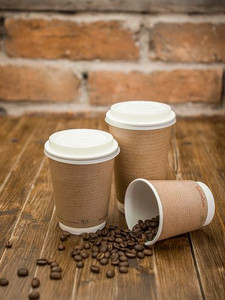Wares to offer eco-friendly food packaging
Posted by The Wares Team on 18th Mar 2021
We’re celebrating the imminent launch of our eco-friendly food packaging categories with a closer look at the eco-friendly materials used for take away packaging. From savvy consumers to ambitious purveyors to passionate volunteers picking up litter along our beaches, there has never been a better time to get involved.
Sustainability is logical for food takeaway boxes
Successful sustainability can be broken down into a series of logical questions. When it comes to environmentally friendly food packaging, it's essential to consider the reality of items such as takeaway cups with lids becoming litter. The questions we ask then become about how the materials used to make packaging can be broken down.
Look for the FSC (Forest Stewardship Council) logo on paper and wood products to ensure you’re supporting environmentally friendly forests. PLA (polylactic acid) cutlery is the one to avoid because it doesn’t compost or break down properly when at landfill. The same eco friendly packaging checks apply for take away cups with lids.
'Bio' doesn’t always mean good for food takeaway boxes
A popular choice for disposable food containers, bioplastics were originally thought to be sustainable. Today, however, we have better options available that do not require temperatures in excess of 60 degrees to begin to break down.
A helpful way to choose your takeaway food packaging is to consider what happens when it becomes litter. How quickly does it break down? Can it be composted? Does the product require composting in a commercial composting plant?
Not all compostable food takeaway boxes are created equal
Let’s take a brisk walk through some common compostable terms we see on food packaging to learn a little bit more about how sustainable they are.
- PLA plastics: Clear PLA and white CPLA can be broken down in a commercial composter in under 90 days. You cannot compost your PLA food packaging, cutlery and cup lids at home because of the high temperatures required.
- Biodegradable: A great but non-specific term. For instance, wood is considered biodegradable, yet we do not know of any wooden sheds that have begun to degrade. So if you purchase biodegradable packaging the number one question you need answered is how long will the item take to decompose, and how the item can be composted.
- Compostable packing does not automatically mean you can chuck it in your domestic composter. While yes, compostable food packaging eliminates the need to separate your food scraps from the packing before composting, you still need to use a commercial composting facility to dispose of correctly.
- Vegware is pretty much what it sounds like. Most vegware packaging ingredients tick every sustainability box, including low carbon, reclaimed, recycled and renewable. It’s intended to be commercially composted.
Consumers care about food takeaway boxes and other packaging
Nowadays when we see people perusing food packaging they aren’t necessarily looking for nutritional content or counting calories. From ditching our takeaway cups with lids in favour of a travel cup from home to sourcing authentic eco friendly packaging, it's safe to say most of us are actively involved in protecting our planet. Just over half of millennials ensure their packaging is sustainable before allowing it to enter their shopping basket.
A whopping 70% of shoppers are influenced by sustainable packaging and 66% of us have stopped buying products because they are not environmentally friendly. Another 70% of us have spent extra on products because they are more environmentally friendly than the cheaper version. And 39% of us check the packaging of beverages before purchasing.
Beautiful, brilliant bagasse for food takeaway boxes
Bagasse is the name given to the dry fibrous waste left behind after sugar has been obtained from crushing the sugarcane plant. The word ‘bagasse’ comes from the Spanish ‘bagazo’, which means ‘pulp’. A fantastic building agent, bagasse produces packaging for food as well as being a solid stand in for wood, producing paper, board and pulp for wood products.
In fact, bagasse is a perfect material for food packaging because of its ability to withstand both hot and cold temperatures. Freezer and microwave friendly, chlorine-free, completely compostable and biodegradable and is a product of resources renewed on an annual basis. Bagasse is also a food favourite because it does not seep sauces.
Your bagasse food containers will begin breaking down within four weeks. Ideal composting conditions include heat, microorganisms and moisture. Shredding your bagasse products beforehand considerably speeds up the process.
The key to understanding sustainability is to remember that nothing is disposable. Everything has to go somewhere, eventually. Let that place be somewhere good for the planet! We are excited to launch our eco-friendly food packaging categories in the near future. Like most humans, we are happiest when we are doing something to help.

